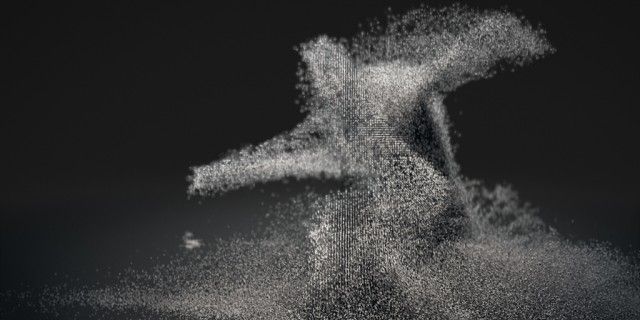Untitled Sound Sculpture Daniel Franke & Cedric Kiefer
It is fascinating to see 3ds Max being used by artists. There’s gotta be all sorts of potential in a program like that or Rhino that’s just waiting to be discovered and applied to who-knows-what.
And I think if I may, I will defer to the expertise of the artists, onformative and just quote them for the remainder of the article…
“The basic idea of the project is built upon the consideration of creating a moving sound sculpture from the recorded motion data of a real person. For our work we asked a Laura Keil, a berlin based dancer to interpret a musical piece – Kreukeltape by Machinenfabriek – as closely as possible with the movement of her own body. She was recorded by three depth cameras (Kinect), in which the intersection of the images was later put together to a three-dimensional volume (3d point cloud), doing so we were able to use the collected data throughout the further process. The three-dimensional image allowed us a completely free handling of the digital camera, without limitations of the perspective.”
The camera also reacts to the sound and supports the physical imitation of the musical piece by the performer. She moves to a noise field, where a simple modification of the random seed can consistently create new versions of the video, each offering a different composition of the recorded performance. The multi-dimensionality of the sound sculpture is already contained in every movement of the dancer, as the camera footage allows any imaginable perspective.
Similar to painting, a single point appears to be still very abstract, but the more points are connected to each other, the more complex and concrete the image seems. The more perfect and complex the “alternative worlds” we project and the closer together their point elements, the more tangible they become. A digital body, consisting of 22 000 points, thus seems so real that it comes to life again. Using 3 different microsoft kinect cameras the movement of the dancer was recorded into those 3d pointclouds that were synced and exported as one large dataset as Krakatoa particle files to be loaded into 3ds max for further rendering and creation of the 3d scene including the camera movement that is controlled by the audio as well.
Courtesy of Daniel Franke & Cedric Kiefer















Courtesy of Daniel Franke & Cedric Kiefer



